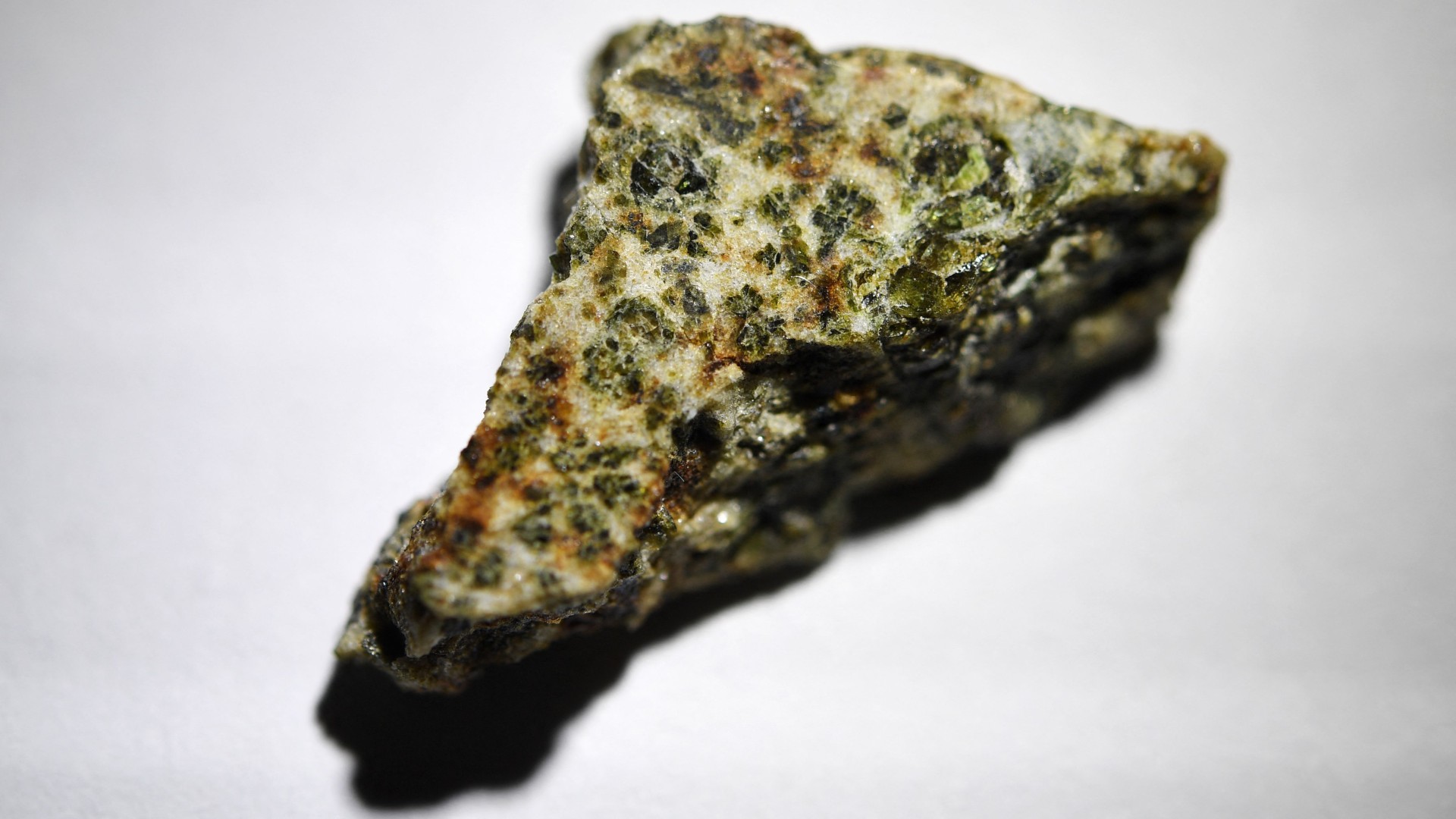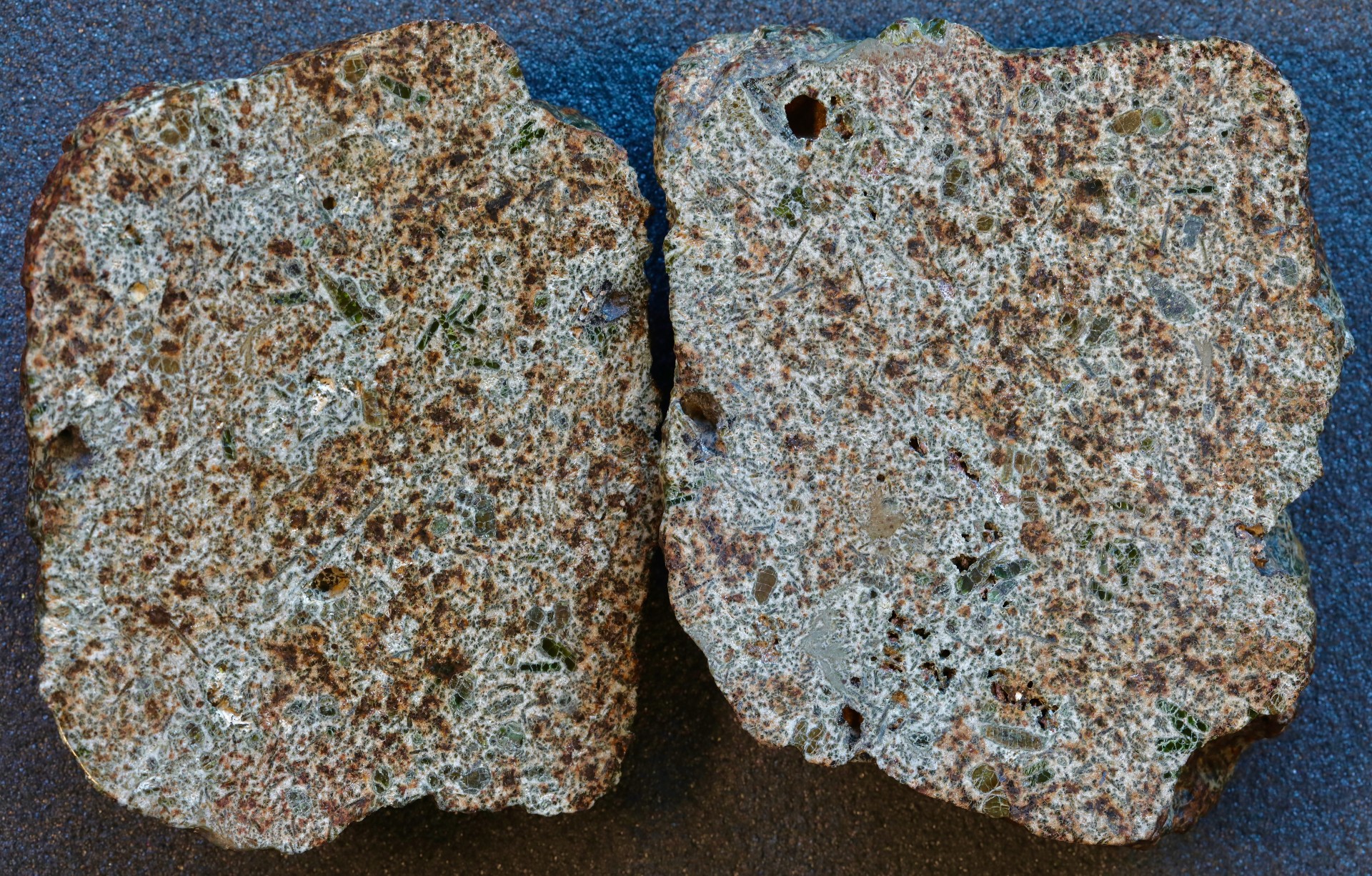4.6 billion-year-old meteorite could reveal how Earth formed different layers
The meteorite Erg Chech 002 found in the Sahara desert in 2020 is one of the oldest known space rocks.

Scientists have analyzed one of the oldest space rocks ever discovered. The data could reveal secrets about the solar system in its infancy during the birth of the planets and also help scientists better determine the ages of the oldest meteorites that fall to Earth.
The 4.6-billion-year-old Erg Chech 002 meteorite, which is encrusted with green crystals, was discovered in the Erg Chech region of the Sahara Desert in Algeria in 2020.
Meteorites like this are believed to have formed from material in a disk of gas and dust around the infant sun. Cold, dense patches of this "solar nebula" collapsed to birth the planets, but leftover material formed comets and asteroids from which meteors break away, often finding their way to the surface of Earth in the form of meteorites. This means that meteorites can paint a picture of the elements that served as the building blocks of the planets.
Related: Meteorites and volcanoes may have helped jump-start life on Earth
Erg Chech 002 contained the radioactive isotope Aluminum-26 when it formed, which is significant because this unstable form of Aluminum is believed to have been important in a later stage of Earth's evolution, so-called "planetary melting," the team, led by Australian National University scientist Evgenii Krestianinov, wrote in a paper published in Nature Communications.
Planetary melting is believed to be the process by which rocky planets like ours "differentiated" or formed different compositions at different layers. This is because the melting allows denser material to sink to the core of planets. So, for Earth, an example of this differentiation would be the formation of a dense metal core and, above it, a less dense rocky mantle.
Understanding how Aluminum-26 was distributed as the planets were forming around 4.6 billion years ago is thus important to building a picture of how the rocky inner planets of the solar system evolved. Additionally, because Aluminum-26 decays to Magnesium-26, a stable form of Magnesium, it can be used as a dating system for space rocks.
Breaking space news, the latest updates on rocket launches, skywatching events and more!
To determine the age of Erg Chech 002 as 4.566 billion years old, the team measured the amounts of lead isotopes within it, but this, ironically, could have provided scientists with a way of improving another dating strategy for similar meteorites.
"Aluminum-26 is very useful stuff for scientists who want to understand how the solar system formed and developed," Krestianinov told Live Science. "Because it decays over time, we can use it to date events — particularly within the first four or five million years of the solar system's life."
Meteorite dating made easy
The half-life of Aluminum-26 is around 717,000 years, meaning it is too short-lived to be directly found in large quantities in the 4.6-million-year-old space rock. But, when it decays, this radioactive isotope of Aluminum leaves behind Magnesium-26, a stable non-radioactive isotope of Magnesium.
That means Magnesium-26 can be used to determine the starting amount of Aluminum-26 in a space rock like Erg Chech 002, and this could be used as a dating system (also known as a chronometer) for space rocks. But there is something that scientists need to know first.
"The Aluminum-26 – Magnesium-26 decay system also serves as a high-resolution relative chronometer," the authors write, adding that to do this, it is important to determine if Aluminum-26 was unevenly or evenly distributed throughout the solar nebula that birthed the planets, asteroids, and comets of the solar system.
The researchers' study of Erg Chech 002, an achondrite rock formed by melting planetesimals, was combined with existing data regarding angrite meteorites — a rare group of achondrites. Achondrites are meteorites that show signs of having experienced melting and have features similar to volcanic rock here on Earth.
"We found that the parent body of Erg Chech 002 must have formed from material containing three or four times as much Aluminum-26 as the source of the angrites' parent body," said Krestianinov. "This shows Aluminum-26 was indeed distributed quite unevenly throughout the cloud of dust and gas which formed the solar system."
This revises our picture of Aluminum-26 in the early solar system and could suggest that the age of meteorites that have been dated using this method alone in the past may have to be revised.
Yet, the team's findings also point to the Aluminum-26 – Magnesium-26 decay as a more effective chronometer for meteorites.
"Developing a generalized approach for isotopic dating with Aluminum-26 – Magnesium-26 and other extinct isotope chronometers that accounts for heterogeneous distribution of the parent radionuclide would allow [us] to produce more accurate and reliable age data for meteorites and asteroidal and planetary materials to advance a better understanding for the formation of our solar system," the authors concluded.
The team's research was published on Aug. 29 in Nature Communications.

Robert Lea is a science journalist in the U.K. whose articles have been published in Physics World, New Scientist, Astronomy Magazine, All About Space, Newsweek and ZME Science. He also writes about science communication for Elsevier and the European Journal of Physics. Rob holds a bachelor of science degree in physics and astronomy from the U.K.’s Open University. Follow him on Twitter @sciencef1rst.

